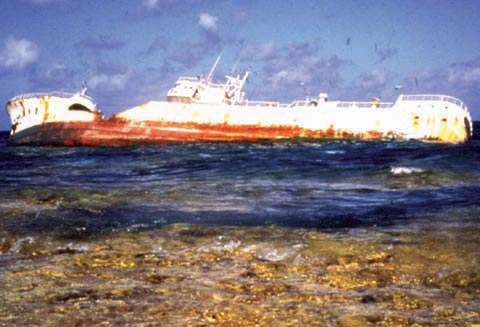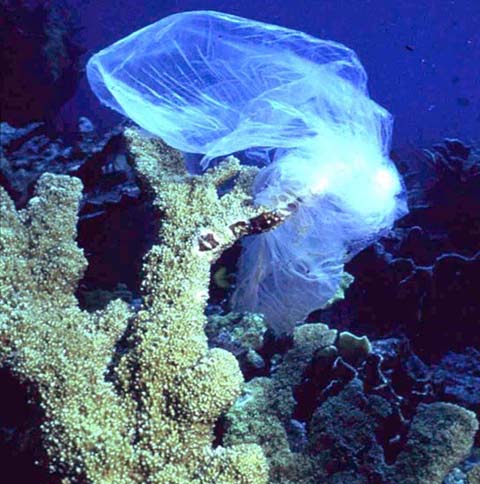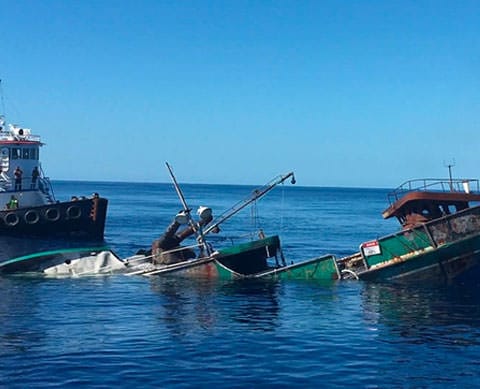Anthropogenic (Human) Threats to Corals
Corals Tutorial
Human-caused, or anthropogenic activities, are major threats to coral reefs. Pollution, overfishing, destructive fishing practices using dynamite or cyanide, collecting live corals for the aquarium market, mining coral for building materials, and a warming climate are some of the many ways that people damage reefs all around the world every day.
One of the most significant threats to reefs is pollution. Land-based runoff and pollutant discharges can result from dredging, coastal development, agricultural and deforestation activities, and sewage treatment plant operations. This runoff may contain sediments, nutrients, chemicals, insecticides, oil, and debris.
When some pollutants enter the water, nutrient levels can increase, promoting the rapid growth of algae and other organisms that can smother corals.
Coral reefs also are affected by leaking fuels, anti-fouling paints and coatings, and other chemicals that enter the water. Petroleum spills do not always appear to affect corals directly because the oil usually stays near the surface of the water, and much of it evaporates into the atmosphere within days. However, if an oil spill occurs while corals are spawning, the eggs and sperm can be damaged as they float near the surface before they fertilize and settle. So, in addition to compromising water quality, oil pollution can disrupt the reproductive success of corals, making them vulnerable to other types of disturbances.
In many areas, coral reefs are destroyed when coral heads and brightly-colored reef fishes are collected for the aquarium and jewelry trade. Careless or untrained divers can trample fragile corals, and many fishing techniques can be destructive. In blast fishing, dynamite or other heavy explosives are detonated to startle fish out of hiding places. This practice indiscriminately kills other species and can crack and stress corals so much that they expel their zooxanthellae. As a result, large sections of reefs can be destroyed. Cyanide fishing, which involves spraying or dumping cyanide onto reefs to stun and capture live fish, also kills coral polyps and degrades the reef habitat. More than 40 countries are affected by blast fishing, and more than 15 countries have reported cyanide fishing activities.
Other damaging fishing techniques include deep water trawling, which involves dragging a fishing net along the sea bottom, and muro-ami netting, in which reefs are pounded with weighted bags to startle fish out of crevices. Often, fishing nets left as debris can be problematic in areas of wave disturbance. In shallow water, live corals become entangled in these nets and are torn away from their bases. In addition anchors dropped from fishing vessels onto reefs can break and destroy coral colonies.
Increased greenhouse gases from activities like deforestation, and the burning of fossil fuels for heat and energy, cause ocean temperatures to rise, change storm patterns, and contribute to sea level rise. These changes lead to more coral bleaching events, increased storm destruction, and more.

Ships that become grounded on coral reefs may cause immediate and long-term damage to reefs. Learn more and view a larger image.

There are many ways that pollution can damage reefs. Debris like this plastic bag can quickly become entangled on a coral and smother it. Learn more and view a larger image.

Certain types of fishing can severely damage reefs. Trawlers catch fish by dragging nets along the ocean bottom. Reefs in the net's path get mowed down. Long wide patches of rubble and sand are all that is left in their wake.